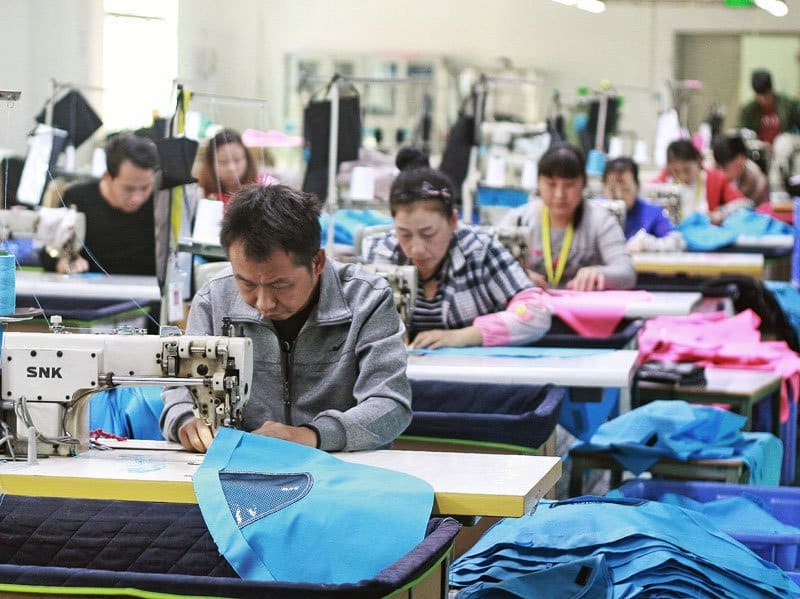Overview
Manufacturing products is a complex process that requires careful planning and execution. Finalising the product design, selecting the right manufacturing partner, investing in prototyping and testing, and understanding manufacturing costs are all critical steps in ensuring the success of your product. In addition, it is essential to consider other key factors such as domestic vs. overseas manufacturing, vetting potential manufacturers, questions to ask, negotiating terms, and cost-saving strategies.
What is Choosing a Manufacturing Partner all about?
Choosing a manufacturing company is a pivotal decision that can profoundly impact the success of your product. It involves navigating a complex landscape of options, each with its own strengths, capabilities, and limitations. From finding a partner that aligns with your vision and values to ensuring cost-effectiveness and quality, the process requires careful consideration and strategic evaluation. Ultimately, selecting the right manufacturing company is about forging a collaborative partnership that fosters innovation, reliability, and long-term success.
Success Story
As someone who’s worked in the baby product industry for years, I know how challenging it can be to launch a new pushchair. For one of my clients, a brand committed to creating the safest, most innovative pushchair on the market, the journey from concept to product launch was a long and meticulous one.
The biggest challenge we faced was finding the right manufacturing partner. Our client was determined to manufacture their pushchair in the UK to ensure the highest standards of safety and ethical manufacturing practices. However, we soon realised that the UK’s supply chain for pushchair manufacturing was dwindling, which prompted us to explore global manufacturing options.
I set our sights on the world’s largest trade show for the baby product industry in Germany, which promised access to a vast array of manufacturers, particularly in the Far East. However, with so many options available, it was crucial to find a manufacturing partner that could deliver on our client’s high standards of safety, quality, and design innovation.
To select the right manufacturing partner, we embarked on a meticulous selection process that involved evaluating manufacturers based on their displayed products, quality of materials, and design innovation. We also engaged in detailed conversations with each manufacturer to understand their capabilities, safety standards compliance, and willingness to collaborate.
We created a shortlist and then visited their factories over the next few months. Various factories were eliminated due to basic issues like no doors on the staff toilets (would you believe it!), dark and dingy working conditions or revelations once the factory owner was bit drunk. A good and honest translator was critical for these investigative trips!
Finally we found an ideal manufacturing partner who was the perfect size for our requirements and eager to start working with us. We completed the rest of the steps outlined here and produced the first 300 products. It passed the EU certification and got the senior buyers approval at John Lewis, so we must have done something right!
Why Choosing the Right Manufacturer is so Important
Choosing the right manufacturing company is crucial because it directly influences the quality, cost, and efficiency of bringing your product to market. A reliable manufacturing partner can ensure that your product is produced to the highest standards, meets regulatory requirements, and is delivered on time and within budget. On the other hand, selecting the wrong manufacturer can lead to delays, quality issues, and increased costs, ultimately jeopardising the success of your product and business. By making an informed decision when choosing a manufacturing company, you can mitigate risks, optimise resources, and set the foundation for long-term growth and profitability.

Choosing a product manufacturing company Process
Step 1 – Finalise the Design of your Product
One of the most critical steps in the process of manufacturing a product is to finalise its design. Without a finalised design, it is impossible to accurately estimate the cost of manufacturing or to create a realistic timeline for production. Therefore, it is essential to invest adequate time and resources into designing a product that is not only functional but also aesthetically pleasing.
To ensure that your product design is as detailed and finalized as possible, it is recommended to use Computer-Aided Design (CAD) software. CAD software allows you to create precise design blueprints, making it easier to communicate with manufacturers and ensure that your product is manufactured exactly to your specifications. Additionally, consulting with a product designer can provide you with professional insights on design optimisation, which can help you improve the functionality and aesthetics of your product.
Step 2 – Choose between Domestic or Overseas Manufacturing
When it comes to manufacturing your product, one of the key decisions you’ll need to make is whether to choose a domestic or overseas manufacturer. Each option has its own set of pros and cons. Domestic manufacturing might offer shorter lead times, easier communication, and potentially fewer logistics issues. However, it can also be more expensive due to higher labour costs and greater regulatory requirements. On the other hand, overseas manufacturers often have greater production capacity. However, it can also present challenges such as language barriers, cultural differences, longer lead times, and potential quality control issues.
Step 3 – Vetting Potential Manufacturers
Once you’ve decided on a geographical location, it’s important to start vetting potential manufacturers. Look for manufacturers with experience in your product category and ask for references and samples of their work. It’s also wise to visit the factory in person, if possible, to get a sense of their operations and capacity. Other ways to vet a manufacturer include checking their online reviews, contacting trade associations or business organisations, and consulting with other businesses in your industry. Also don’t forget to ask the manufacturer to provide English speaking references who you can contact.
Step 4 – Questions to Ask
It’s important to ask the right questions. Inquire about their minimum order quantities (MOQs), lead times, experience with similar products, and their quality control processes. Understanding their capabilities and limitations upfront can help prevent misunderstandings and disappointments down the line.
Step 5 – Negotiating Terms
Once you’ve selected a manufacturer, it’s important to negotiate terms that protect your interests. This includes clarity on pricing, delivery schedules, payment terms, and what happens in the event of quality issues or delays. A contract with your manufacturer is essential, but it’s also important to build a good working relationship to ensure long-term success. Make sure the contract includes details of what happens in various worse case scenarios.
Step 6 – Understanding Manufacturing Costs
A clear understanding of the costs involved in manufacturing your product is essential for pricing it correctly and ensuring profitability. You need to consider factors such as manufacturing costs, tooling and setup costs, MOQs, and cost-saving strategies. Explore strategies to reduce costs without compromising on quality. This might include ordering larger quantities to benefit from economies of scale, simplifying your product design, or substituting expensive materials with more cost-effective alternatives where possible.
A clear understanding of the costs involved in manufacturing your product is essential for pricing it correctly and ensuring profitability. Here’s what you need to consider:
Manufacturing Costs:
-
- What does the manufacturer’s quote include and not include.
-
- What are the MOQs.
-
- How long is the price fixed for?
-
- Complete tooling and setup costs.
-
- Cost for tooling alterations.
-
- All potential cost saving strategies investigated and applied where appropriate.






Choosing a product manufacturing company FAQs
How do I find a good quality manufacturer?
Finding a reliable and high-quality manufacturer involves several key steps:
- Research and Shortlisting: Start by researching potential manufacturers online, through industry directories, trade shows, and networking events. Create a shortlist of candidates based on their reputation, experience, and capabilities.
- Assessing Capabilities: Evaluate each manufacturer’s capabilities, including their production capacity, technology, quality control processes, and certifications. Look for manufacturers with a track record of producing similar products and meeting quality standards.
- Request for Proposals (RFPs): Send out detailed requests for proposals to your shortlisted manufacturers, outlining your product specifications, quantity requirements, timeline, and quality expectations. This allows you to compare quotes, capabilities, and terms from different manufacturers.
- Quality Assurance: Prioritize manufacturers with robust quality assurance processes in place. Inquire about their quality control measures, testing procedures, and certifications to ensure consistency and reliability in product manufacturing.
- References and Reviews: Ask for references from past clients and request samples of their work to assess quality firsthand. Additionally, check online reviews, testimonials, and industry forums to gather insights from other businesses’ experiences with the manufacturer.
- Communication and Transparency: Choose a manufacturer that communicates openly and transparently throughout the process. Clear communication channels, responsiveness to inquiries, and willingness to address concerns are essential for a successful partnership.
- Visit the Facility: Whenever possible, schedule a site visit to the manufacturer’s facility to observe their operations, meet the team, and assess their capabilities firsthand. This provides valuable insights into their production process, equipment, and overall professionalism.
By following these steps and conducting thorough due diligence, you can identify a reputable and high-quality manufacturer capable of meeting your production needs and delivering superior products.
What are the 5 characteristics of a quality product?
- Functionality: A quality product effectively performs its intended function or purpose without defects or malfunctions. It meets or exceeds customer expectations in terms of performance and reliability.
- Durability: A quality product is built to last, withstanding regular use and environmental factors without premature wear or deterioration. It maintains its functionality and appearance over an extended period.
- Safety: A quality product prioritizes user safety by adhering to relevant safety standards and regulations. It minimizes potential hazards, risks, or harmful effects to users during normal usage or foreseeable misuse.
- Ease of Use: A quality product is user-friendly and intuitive, with clear instructions and ergonomic design elements. It minimizes complexity, reduces learning curves, and enhances user satisfaction through effortless operation.
- Innovative Design: A quality product often exhibits innovative design features that set it apart from competitors. Whether it’s a unique aesthetic, user-friendly interface, or cutting-edge technology, innovation enhances the product’s functionality and appeal. This characteristic demonstrates the manufacturer’s commitment to staying ahead of the curve and meeting evolving consumer needs.
How do I choose a product to manufacture?
Choosing a product to manufacture involves several key steps:
- Market Research: Identify consumer needs and market trends to determine potential product demand. Analyze competitors and assess gaps in the market that your product can fill.
- Evaluate Your Expertise: Consider your knowledge, skills, and resources. Choose a product that aligns with your expertise and capabilities, ensuring efficient production and quality control.
- Cost Analysis: Calculate the production costs, including materials, labor, and overhead. Compare these costs to potential selling prices to ensure profitability.
- Prototype Development: Develop a prototype to test the product’s functionality and market appeal. Gather feedback from target customers to refine the product design.
- Consider Sustainability: Evaluate the environmental impact of your product and manufacturing processes. Choose sustainable materials and production methods whenever possible.
- Legal and Regulatory Considerations: Research patents, trademarks, and other intellectual property rights to avoid infringement. Ensure compliance with safety and quality standards.
- Scalability: Assess the scalability of your product, considering future production volumes and expansion opportunities.
By carefully considering these factors, you can select a product that aligns with market demand, your capabilities, and long-term business goals.
What is a product manufacturing company?
A product manufacturing company is a business entity that specializes in the production of goods on a large scale. These companies are responsible for transforming raw materials or components into finished products through various manufacturing processes. Product manufacturing companies often operate in specific industries and sectors, such as automotive, electronics, pharmaceuticals, consumer goods, and more. Their primary focus is on efficiently producing high-quality products that meet market demand while optimizing costs and ensuring compliance with industry regulations and standards.
What do you need to submit to a manufacturer?
When submitting a project to a manufacturer, you typically need to provide a comprehensive set of documents and information to ensure clarity and facilitate the manufacturing process. This submission package may include:
- Product Specifications: Detailed specifications outlining the design, dimensions, materials, and functionality of the product.
- Technical Drawings: Precise drawings or blueprints illustrating the product’s dimensions, features, and assembly instructions.
- Bill of Materials (BOM): A comprehensive list of all the raw materials, components, and parts required to manufacture the product, including quantities and specifications.
- Prototypes or Samples: Physical prototypes or samples of the product to help the manufacturer understand its design and construction.
- Manufacturing Requirements: Specific instructions or requirements regarding production processes, quality standards, testing procedures, and packaging.
- Legal Documents: Any necessary legal documents, such as non-disclosure agreements (NDAs), intellectual property agreements, or manufacturing contracts, to protect your interests and ensure confidentiality.
- Quantity and Timeline: Information about the desired production quantity, delivery schedule, and any deadlines or milestones associated with the project.
- Communication Channels: Clear channels of communication, including contact details for key stakeholders and designated points of contact on both sides.
By providing these essential documents and information, you can effectively communicate your vision, requirements, and expectations to the manufacturer, facilitating a smooth and successful manufacturing process.

Conclusion
-
- Ensure that you are comparing apples to apples by interrogating the quotes.
-
- Prep a manufacturing contract. (You might need a commercial solicitor for this.)
-
- Create comparison tables to compare manufacturers on a range of criteria. Weigh what’s critical for you and your product.
-
- Take references before commissioning and ideally meet them in person.
-
- Finally, consider the payment terms offered by the manufacturer and their impact on your cash flow.
In summary, to ensure success in manufacturing your product, it’s essential to consider factors such as domestic vs. overseas manufacturing, vetting potential manufacturers, negotiating terms and understanding manufacturing costs. By taking a strategic approach and investing adequate time and resources into each step of the process, you can set your product up for success and achieve your business goals.

